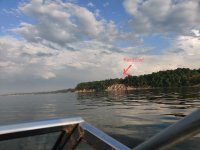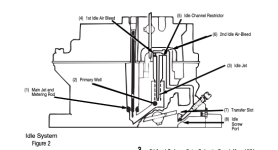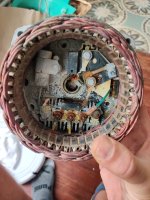Back in the early 1980's I owned a 1976 Ford Escort (not unlike this...).
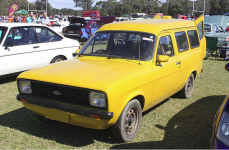
Being a young male, I decided the 1.6L engine just needed a 'bit of help'.
All the pollution control rubbish was disabled (left in place but the rubber tubes plugged with ball bearings), the low compression head was replaced with a high compression Heron head, the cam was changed to one from a GT Cortina, and the fuel system got a nice twin barrel Weber 32DGV, which had an 'idle jet' to control the fuel to the idle mixture screw. This jet also controlled the fuel to the progression holes, so if the jet was the wrong size you could get the idle right with the mixture screw, but the 'off idle' wouldn't be right... Anyway, this engine was also bored 60 thou, and I suspect the combination of all the mods left the idle jet way out of spec. The engine idled nicely, was great after about 2,000rpm, but that off idle was rubbish (way too lean), very difficult to drive (manual gearbox).
I found the local Weber agent at the time and went to buy idle jets. He wouldn't sell them. Insisted that I bring the car in and have it on the dyno and they'd select and fit the right jet, for half a week's pay!
Sod that for a bunch of soldiers! I had a few spare carbs, so pulled the idle jets out of them and set about 'self-tuning'. I'd bought a set of 'pin drills' (little baby drill bits from 80 thou all the way down to 13 thou) and one day set about incrementally drilling out an idle jet until I got it right.
Didn't take more than about an hour to get the right size, and after that, that car was very nice. Topped out at over 160km/hr (back in the day even the big 6s were struggling to make that), and towed my 15' fibreglass boat with ease.
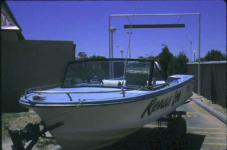
Anyway, if you have the 1409, there isn't an idle jet on it, all your tuning is done by the main jets and the metering rods, springs and jets. Set the main jets for the right size at higher engine speeds, then set about finding the right metering rods to tune the lower speeds. I haven't looked at the fuel flow diagrams for the 1409, but I suspect the metering rods jets and springs will tune for 'off idle', combined with the mixture screw.
What I'd do is get the mains right and the metering for the mid-range, then set a nice idle. Then see which way the mixture needs to go for 'off idle' by bringing the revs up to about 1300 and seeing which way you need to adjust the idle screw to get a nice run at that speed. Obviously that messes up the idle, but the point is to work out which way the off idle needs to go. Then select a different metering rod (may need to change springs and even the jet) to get the same mid-range but move the off idle the way you need to go... Easy peasy.
Chris..........






















